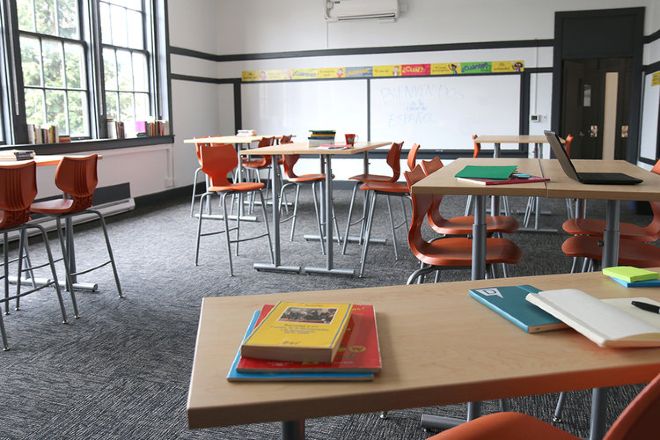Featured image: Classroom in The Downtown School, a Lakeside School, in Seattle
To better track financial health and plan for the future, independent schools can look to five key data markers, as outlined in NBOA’s new white paper based on an analysis of data from BIIS (Business Intelligence for Independent Schools). In a recent NBOA webinar, white paper author Harry Bloom, senior vice president of client solutions at Measuring Success, explained the five markers:
- Enrollment vitality – measured by incoming enrollment, retention, and application volume and trends
- Net tuition vitality – measured by net tuition’s ability to cover operating costs
- Non-tuition income vitality – measured by fundraising revenues, auxiliary income and endowment income
- Staff productivity vitality – measured by staff-to-student ratios
- Value perception vitality – measured by the ratio of application growth to the increase in operating spending per student
Birage Tandon, CFO at Lakeside School in Seattle, joined Bloom on the webinar to share how her school has used sustainability markers to increase enrollment by 70 students in nine years, with admissions yield higher than expected last year. Lakeside enrolls about 850 students (the maximum enrollment) in grades 5-12 and emphasizes global education. Acknowledging that the school benefits from Seattle’s growing economy, Tandon also said Lakeside has a 12 percent admit rate and 58 percent students of color.
Lakeside’s strong financial position is also a result of administrators’ forward thinking. The school ran a large-scale fundraiser in the early 2000s that boosted the endowment by several million dollars. Returns now support 25 percent of the operating budget including financial aid, faculty salaries and a global service program. Because 32 percent of students are on financial aid and the average award is 78 percent of gross tuition, the school is monitoring aid and tuition pricing (Lakeside’s is currently at $35,000) carefully.
In another move three years ago, Tandon and Bernie Noe, Lakeside’s head of school, began studying alternative school models and visited for-profit, charter and online schools to better understand the changing landscape of educational offerings. Using a “fairly simple” algorithm, she explained, Tandon calculated Lakeside’s cost per pupil to determine where the school was spending money, how that aligned with mission and what could be minimized, such as athletics and performing arts, administrative costs and facilities. Careful analysis resulted in the launch of the Downtown School, Lakeside’s new micro-high school in downtown Seattle, with tuition half of Lakeside’s.
Bloom explained how other schools can approach each of the five vitality markers, offering examples from three additional schools that use data to strengthen their financial health. NBOA members can learn more by listening to the webinar, reading the slides and transcript, and downloading the white paper. Member schools can submit data to BIIS until October 26. Reporting capabilities will open in mid-November, pending “scrubbing” to ensure data is accurate.



